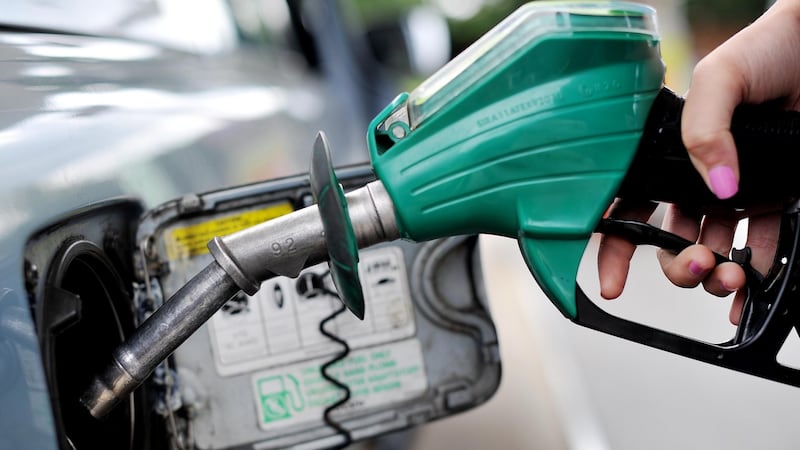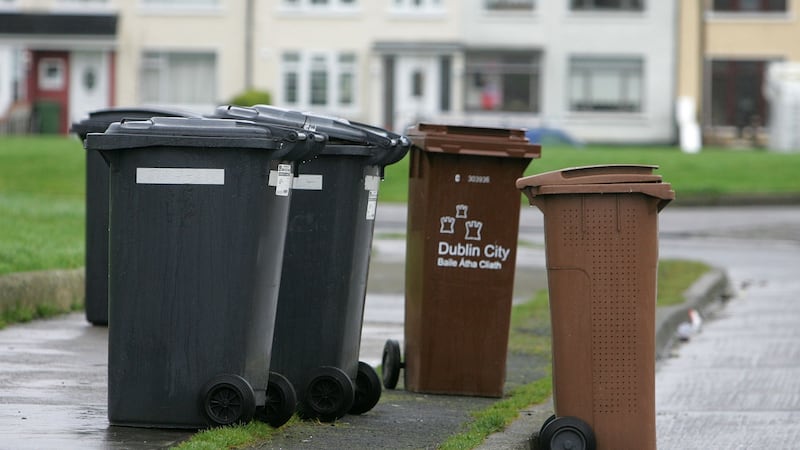It is sometimes simple to give a start date for a crisis as it is marked by a single event or sequence of events. And sometimes it is not so simple.
When it comes to the cost-of-living crisis, it is so vast and has so many tendrils that have snaked their way miserably into so many different aspects of our lives, that identifying an exact moment in time when it all began is not easy.
However, September 2021 is as good a starting point as any as that was the month when the phrase “cost-of-living crisis” started featuring more regularly in this newspaper. The phrase has appeared in thousands of stories we have carried since then.
Pricewatch has written hundreds of them.
READ MORE
We decided to start with September 2021 because that was also the month when inflation hit a 10-year high driven by a rise in the cost of transport, housing, restaurants and hotels.
Central Statistics Office data showed consumer prices rose 2.8 per cent in the 12 months to the end of August 2021. It was the sharpest level of price growth seen since November 2011.
[ Conor Pope: Where will the cost-of-living crisis end?Opens in new window ]
A closer look at the figures from that month suggested that transport costs climbed by just more than 10 per cent, while energy climbed by more than 7 per cent.
Few experts were overly concerned about the price hikes and there was no sign of what was to come.
And what was to come? Only a financial disaster for almost every single household in Ireland. The disaster saw the suddenly spiralling cost of fuel, energy, food, money, entertainment, holidays, healthcare and so much more drain many thousands of euro from household budgets all over the country.
Here are just some of the ways the cost of crisis has caused us pain.
Mortgages
In July the European Central Bank (ECB) increased its main lending rates by 0.25 per cent to 4.25 per cent and added about €300 on to the cost of the home loans of tens of thousands of tracker mortgage holders. But that was only a very small part of the picture. The cumulative annual impact of nine increases since July 2022 now exceeds €5,000 for many homeowners with more financial pain likely in the months ahead as the ECB tries to bring euro zone inflation back to the 2 per cent level it craves.
It is not just tracker mortgage holders – whose repayments are directly linked to ECB rates – who have paid the price for the aggressive monetary policy being pursued in Frankfurt.
Fixed-rate mortgage holders coming to the end of agreed terms and first-time buyers trying to climb on to the property ladder are also having to confront a very different and expensive new reality.
There are more than 400,000 mortgage borrowers on fixed rates, of which more than six in 10 are fixed for less than three years. Many of this will be exiting these fixed rates in the near future and are likely to see the interest rates increase by more than 2 per cent when they do.
Rent
While the cost of owning a home has climbed dramatically for many people over the last two years, the cost of renting one has also climbed significantly. Recent figures from the Residential Tenancies Board put the average rent being paid in newly registered tenancies nationally at €1,544 per month, up almost 9 per cent on the same period last year.
The average rent on new tenancies in Dublin, where demand is strongest, rose by 8 per cent to €2,102 per month. In September 2021, a national rent rise of 7 per cent, the highest increase in more than two years, was recorded.
Nationally, the average was put at €1,352, while in Dublin the average was €1,848 per month. That means that the average cost of renting nationally has climbed by €2,304 when spread over the cost of a year, while the annual average cost of renting in Dublin has climbed by an even more eyewatering €3,048.
House prices
When it comes to price rollercoasters, there is little to top the Irish house. In the run-up to the bursting of the Celtic Tiger bubble, house prices in Ireland climbed at a terrifying pace with modest properties that cost about €150,000 at the turn of the century changing hands for three times that just six years later. Six years after that, the very same prices had halved in value again. At certain points over the last 20 years or so it all started to look like a particularly ludicrous Junior Cert maths problem.
Let’s see how you get on.
“If Johnny and Mary bought a €150,000 house with a 110 per cent mortgage in 2000 and saw it increase in value by 200 per cent after six years and then fall by 50 per cent in another five years.
A) How much is the house said to be worth now?
B) What do they have left to pay on their mortgage?
Answers: A) €225,000 and B) Lord only knows.
That is all by way of saying the Irish housing market can always be counted on to do crazy things and so it has done over the last two years. While price increases have eased significantly over recent months – particularly in Dublin – a property that was priced at €350,000 in September 2021 is most likely priced at about €400,000 today.
Health insurance
More than two million people in Ireland have private health insurance and in the early phase of the cost-of-living crisis they were spared any price hikes. Things have changed in recent months and while the level of increases depends on the nature of the policy and the number of people in a household covered, most Irish households with family polices in place will end up worse of by at least €400 when all the price hikes are totted up.
Food
Outside of mortgages, food is the almost certainly the biggest expense for most households. While you might think that we have passed the worst of the crisis, at least in terms of our shopping habits, due to the headlines about lower-priced milk, bread and some other products, the reality is quite different.
The cost of groceries went up by almost 13 per cent in the 12 months to the start of August, according to figures from retail analyst Kantar. It is worth remembering that represents a 13 per cent increase on July 2022 when year-on-year inflation was put at close to 10 per cent.
The cumulative impact of many months of inflationary pressure means many Irish households are likely to have to spend an additional €1,000 or more on groceries over the next 12 months than they did in 2020, and the chances of prices falling to pre-crisis levels in the short, medium or even longer term are very low to non-existent.
In fact, things could take a turn for the worse in the medium term as a result of global supply-chain issues and geopolitical unrest and war in eastern Europe. At best, Irish consumers might be able to look forward to inflation running at 3 per cent. But that will be a rate that is based on today’s prices, which means that the higher prices people have been forced to pay are likely to be a feature of our grocery shopping for the long term.
Energy
In the autumn of 2021 when we were starting to realise the impact the cost-of-living crisis was likely to have, much of the focus was on energy. The gloomiest of predictions suggested Irish households might be worse off by about €700 each year as a result of higher gas and electricity bills.
It subsequently became clear that such predictions were wildly optimistic with energy prices more than doubling for many people over 2021 and 2022. That has seen annual costs climb by about €2,000 for many people.
There was some good news for customers of Energia in recent days with the company announcing plans to cut its home energy prices by up to 20 per cent from the start of October.
It said the move would save some customers almost €700 on their combined electricity and gas bills over 12 months.
The price cut immediately put pressure on other providers and days later Electric Ireland announced price cuts of up to 12 per cent followed by Airtricity who also announced decreases of a similar margin.
But while any price cut is welcome, it does not mean things are returning to normal. If a household was spending €2,000 a year on household energy in all its forms in 2020 and €4,000 in 2022 and 2023, a 20 per cent discount amounting to €800 will still leave them worse off by €1,200 when compared with just three years ago.
That means that it will still be a long and pricey winter for most people, with the Government likely to come under pressure from multiple quarters to roll out the energy credits and supports that took at least some of the sting out of the price increases last year.

Fuel
To say motor fuel has been on something of a rollercoaster ride in recent years is an understatement. Before the cost of living crisis kicked in, a litre of petrol or diesel could be bought for less than €1.30. At the height of the crisis the same fuel cost more than €2. In March of last year an excise cut was introduced which saved motorists 20 cent or so a litre. It has been phased back in recent months which means the cost of a litre of petrol and diesel could soon cross the €2 barrier, according to the AA with the rises in excise duty combined with a spike in demand and a reduction in the global supply of oil creating a “perfect storm”.
There might be some reprieve in the weeks ahead. Late last month, Minister for Finance Michael McGrath said a final planned increase to the tax – of 6 cent on diesel and 8 cent for petrol – which would bring it back to its original level from the end of October, will be kept under review as the Government prepares the budget package. But even if prices stay at €1.80 it still means that a typical Irish motorist travelling a typical number of kilometres each year – the average is 17,000 – will be worse off by more than €500 when compared with the prices from early 2021.
Hospitality
Most people will be aware of the pressure facing the Irish hospitality sector in recent years. They had a nightmarish two years during the pandemic when they had to shut their doors for extended periods. When they were allowed to trade again, they had to impose strict limits on the number of customers they could serve.
Having got through that, the sector then had to contend with the same cost-of-living pressures that we were all facing, although with pubs, hotels and restaurants using a lot more energy and buying a lot more food than the rest of us, the financial pain was a whole lot worse for the sector.
[ Podcast: Will ending the 9% VAT rate spell disaster for the hospitality sector?Opens in new window ]
Many of the higher input costs were passed on to consumers. Things are not likely to get much better in the months ahead, not least because a reduced VAT rate of 9 per cent for the sector has now ended. The sector is not paying VAT at 13.5 per cent which means that – in most if not all instances – consumers are going to end up paying the price.

Waste
Refuse collection companies have passed on multiple increases to their customers over the last two years. While the increases will vary depending on the company, the scale of the refuse being collected and other factors, many Irish households will be worse off by at least €150 due to these rising rubbish collection costs.
The bottom line
When all these elements are totted up, many Irish households will be worse off by an eye-watering €7,500 over the next 12 months when compared with the 12 months up to September 2021. While some may not be hit as hard, others will experience significant financial challenges. And while we can hope that things are getting better, it would be wildly optimistic to expect a return to the good old days.
If only we knew they were the good old days when we were living through them.














